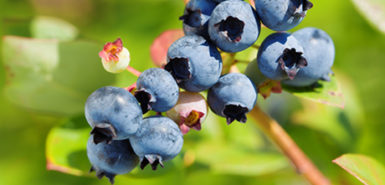
February is the month of love.
So what says love better than a box of chocolates? It is no secret that for many, the way to the heart is through the stomach. And chocolate has been one of those special foods that seems to hit that irresistible spot.
But, aside from the emotional benefits, can chocolate actually improve your physical health?
Chocolate has long been known for its high content of flavanols, a naturally occurring compound found in many plant foods including fruits, vegetables, wine and tea.
These particular flavanols have a positive effect on the circulatory system, which transports blood through the body. They help to maintain flexibility of the arteries, a key part in heart health, and also act as antioxidants to fight off damaging free radicals.
Researchers have also found an additional benefit to chocolate. A study published in Neurology found that drinking two cups of hot chocolate per day in older adults actually improved thinking skills. This was shown by an improvement in blood flow to the brain.
So, not only does it help protect our hearts, but it can also help our brains.
How can we take part in these wonderful chocolaty benefits? First, this study does not give license to buy all forms of chocolate candy and indulge. There are some ways, however, you can get a healthy dose of chocolate without all the sugar, fat and tighter pant size.
A healthy dose of chocolate
Enjoy 70% or higher dark chocolate rather than milk chocolate as it has lower sugar and higher cocoa content.
If you’re adding cocoa to recipes, make sure to use CocoaWell or CocoaVia brands as those are healthier options.
There are no established serving sizes for chocolate or flavanols, so enjoy these treats in moderation and be sure to include other flavanol-rich foods in your diet.
For maximum health benefits, it is recommended to aim for 200 to 900 mg of flavanols per day. Flavanol content varies from brand to brand in chocolates but the average dark chocolate bar will have 7 mg of flavanols per gram of chocolate.
This doesn’t mean you should eat 100 chocolate bars a day, it just means you should check out other flavanol-rich foods such as apples, grapes, pears, tea and wine.
And if you’re giving chocolates to your Valentine (or yourself for that matter), consider a dark chocolate with at least 60% cocoa. The higher the percentage, the better the antioxidant property.
If the first ingredients are cream, butter, sugar or preservatives, chances are you are paying for more fillers and shelf life. Go with a “less is more” approach with Valentine’s chocolates by buying fewer pieces that are made with quality dark chocolate and ingredients. Always skip buying chocolates with high fructose corn syrup and trans fats in the ingredients.
Remember balance and variety in your diet from fresh, healthy sources and portion sizes are easier to maintain when eating mindfully and slowly.
 /a>
/a>
 /a>
/a>
 /a>
/a>
Why should we avoid Dutch processed cocoa powder?
Hi Becca, great question. While there is nothing wrong with the Dutch processed cocoa, it does remove some of the flavanol content in the cocoa. So If you want to get the best nutrition benefit, just look for plain cocoa. Thanks for reading!
My favorite: Ghirardelli Intense Dark 86% Chocolate
What is your opinion?
For 3 squares: (I have 1.)
Calories: 180
Total Carbohydrate 11 g
Dietary fiber 4 g
Total sugars 4 g
Protein 3 g
Ingredients: unsweetened chocolate, cocoa butter, sugar, milk fat, natural flavor, vanilla extract, soy lecithin.
God I love chocolates and I also eat dark chocolate instead of normal chocolates because dark chocolate is lower in sugar. Amazing!